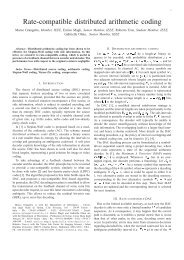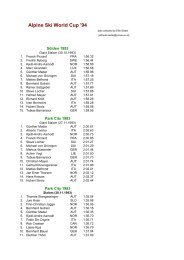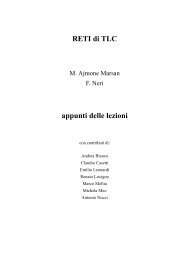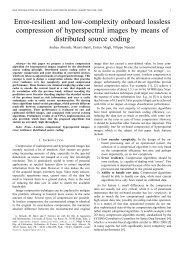Transform coding techniques for lossy hyperspectral data compression
Transform coding techniques for lossy hyperspectral data compression
Transform coding techniques for lossy hyperspectral data compression
Create successful ePaper yourself
Turn your PDF publications into a flip-book with our unique Google optimized e-Paper software.
IEEE TRANSACTIONS ON GEOSCIENCE AND REMOTE SENSING (SUBMITTED DEC. 2005) 7<br />
A rectangular 2D trans<strong>for</strong>m is such that first the complete 1D wavelet trans<strong>for</strong>m (i.e., all<br />
decomposition levels) is computed in one dimension, and then the complete trans<strong>for</strong>m is applied<br />
to the second dimension.<br />
In 3D, a square trans<strong>for</strong>m is obtained by first computing one decomposition level in all dimensions,<br />
and then iterating on the LLL cube. Conversely, the rectangular trans<strong>for</strong>m is obtained by first applying<br />
the complete trans<strong>for</strong>m along the first dimension, then along the second one, and finally along the<br />
third one.<br />
In 3D, hybrid trans<strong>for</strong>ms can also be obtained as in [16] by first applying the complete trans<strong>for</strong>m<br />
in one dimension, and then taking a 2D square trans<strong>for</strong>m in the other two dimensions. The obtained<br />
trans<strong>for</strong>m is referred to as 3D hybrid rectangular/square DWT.<br />
F. 3D trans<strong>for</strong>ms selected <strong>for</strong> evaluation<br />
The previously described one-dimensional trans<strong>for</strong>ms have been combined in various ways to obtain<br />
3D trans<strong>for</strong>ms <strong>for</strong> <strong>hyperspectral</strong> <strong>data</strong>. The most relevant combinations are reported in the following.<br />
As <strong>for</strong> filter selection in the DWT and DWPT, the (9,7) biorthogonal wavelet filter pair has been<br />
used throughout this work; this filter is known to provide excellent <strong>compression</strong> per<strong>for</strong>mance, and<br />
has been selected <strong>for</strong> inclusion in the JPEG 2000 standard.<br />
1) 3D square DWT: This method is based on the wavelet trans<strong>for</strong>m applied in all three dimensions<br />
simultaneously. In particular, one level of wavelet decomposition is applied along each of the three<br />
dimensions. This procedure is repeated on the obtained LLL cube, as opposed to the rectangular<br />
trans<strong>for</strong>m described in Sect. II-F.3. As an example, Fig. 2 shows in a pictorial way the subbands<br />
obtained by per<strong>for</strong>ming three levels of 3D-decomposition on a <strong>data</strong> cube as described above. The<br />
obtained decomposition has cubic subbands in 3D.<br />
Fig. 2.<br />
Subbands obtained by per<strong>for</strong>ming three levels of 3D square DWT on a <strong>data</strong> cube.






